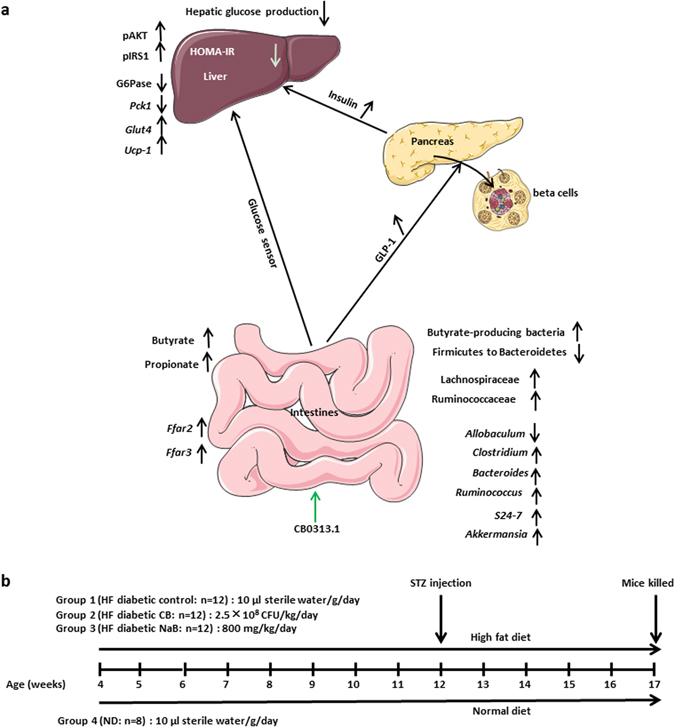Figure 8.

The effects of CB0313.1 on intestine, pancreas, liver and experimental design of high fat diabetic mice. (a) The effects of CB0313.1 on intestine, pancreas and liver. In the intestine, CB0313.1 modified the structure of the gut microbial community, characterized by a decreased ratio of Firmicutes to Bacteroidetes, reversed Allobaculum increase induced by diabetes and increased butyrate-producing bacteria, which led to increased SCFA production and GLP-1 secretion. In the pancreas, CB0313.1 alleviated pancreatic damage, improved the morphology of pancreatic islet, increased insulin secretion. Then, in the liver, CB0313.1 enhanced insulin signaling (pIRS1-Ser307, pAKT-Ser473) and upregulated PPARγ level, which led to reduced hepatic glucose production (G6Pase and Pck1) and insulin resistance (HOMA-IR), ultimately suppressing hyperglycemia. (b) Experimental design for the evaluation of the effect of CB0313.1 administration on HF diabetic mice. Male C57BL/6 J mice were randomly assigned to four groups at 4 weeks of age (n = 8–12/group): (1) HF diabetic control mice were fed HFD with sterile water by gavage daily, (2) HF diabetic CB mice were fed HFD with CB0313.1 by gavage at 2.5 × 108 CFU/kg/day (suspended in sterile water), (3) HF diabetic NaB mice were fed HFD with NaB by gavage at 800 mg/kg/day (suspended in sterile water), (4) ND control mice were fed standard chow with sterile water by gavage daily. All mice of groups (1), (2), and (3) were fed HFD for 8 weeks along with the corresponding intervention and then injected with a single low dose (80 mg/kg body weight) STZ intraperitoneally. All the mice were kept on corresponding chow and intervention until euthanasia.
